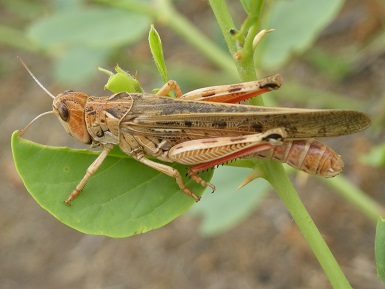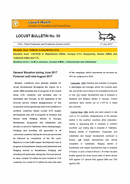General Situation during May 2014 Forecast until mid-July 2014
In May, the Moroccan Locust (DMA) fledged in four out of the five countries in which it was already present in April, namely Afghanistan, Azerbaijan, Kazakhstan and Uzbekistan, and hoppers appeared in three more countries, Georgia, Russia and Tajikistan. In addition, hatching of the Italian Locust (CIT) started in Georgia,...
General Situation during April 2014 Forecast until mid-June 2014
Due to slightly delayed locust hatching in Caucasus and Central Asia (CCA), in addition to Afghanistan, only three other countries started control operations. Hence, a total of 135 000 ha were treated in April against Moroccan Locust (DMA) hopper bands in Afghanistan, Azerbaijan, Kyrgyzstan and Uzbekistan. DMA hopper development will...
General Situation during March 2014 Forecast until mid-May 2014
Due to lower than usual temperatures, locust hatching in Caucasus and Central Asia is delayed and expected at later dates than usual. Only in Afghanistan the hatching of Moroccan Locust (DMA) has already started in late March, immediately followed by the first hopper treatments. In Tajikistan, DMA...
General Situation during September 2013 Forecast until March 2014
The locust situation was calm in Caucasian and Central Asian (CCA) countries as remaining adults progressively disappeared with the exception of Armenia, where Italian Locust (CIT) mating was still observed. No control operations were carried out and no further locust development is expected this year.
General Situation during August 2013 Forecast until mid-October 2013
The locust situation was generally calm in Caucasian and Central Asian (CCA) countries as a result of the intense and large-scale control operations previously carried out mainly up until the end of July and of the progressive disappearance of the remaining locust populations.


